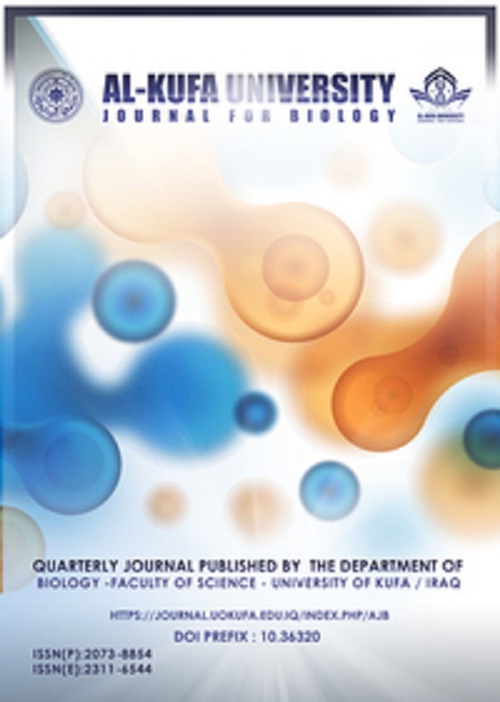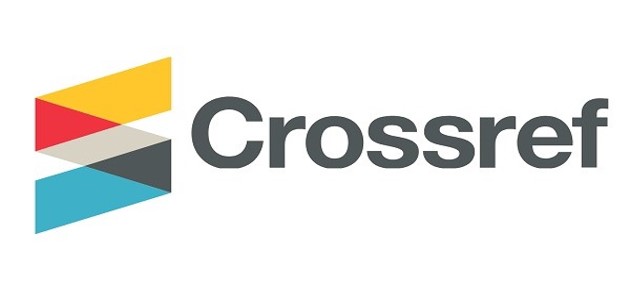The Climate Change and Biodiversity: A Review on Understanding the Global and Local Impacts of Warming on The Ecosystems
A review
DOI:
https://doi.org/10.36320/ajb/v15.i2.11986Keywords:
Biodiversity,climate changes, global warming, disease.Abstract
Some living organisms have been eliminated in some ecosystems, while some diseases have recently been caused due to extreme climate changes nowadays which have been affected by greenhouse gases which disturb the ecosystems. To an extent, the temperature of Earth's planet has increased markedly over the last 100.000 years. This increment can strongly affect the normal existence of a large number of living beings such as animals, plants, and microorganisms. Human life span has been decreased due to the harsh conditions in ecosystems and as one of the consequences of global warming; besides the pathogens, like bacteria, viruses and parasites, have become more resistant to disinfectants and to novel antimicrobial agents much more than before. The production and cultivation of some crops and numerous plant species become harder as a result of high salinity and decreases rainfall. Since 2007, forestation and drought have been the most obvious manifestations in many countries, especially in Iraqi lands leading to the migration of people and some animals like birds away from them. Cattle and some animals like deer and fish have been in a limited number tending to extinction in some Iraqi areas. This review has been prepared to document the global and local impacts of climate change on biodiversity.
Downloads
References
Adhikari, M., Longman, R. et al. (2022). Climate change impacts shifting landscape of the dairy industry in Hawai‘i. Translational Animal Science. 6, 1–11.
Aguilar, C., Abdulhameed, S. et al. (2023). Microbial Biodiversity, Biotechnology and Ecosystem Sustainability. A Book. ©Springer Singapore, 1st edition.
Ali, J., Rauf, M. et al. (2020). Mosquitoes and viruses are dual threat to Pakistan: in the era of climate change. Int. J. Biosci. 16 (3): 375-383.
Coastal flood days (2016). Scientific conference. https://www.climatecentral.org/outreach/alertarchive/2016CoastalFloodDays.php?market=NYC
CSIR, (2012). Climate Change and Agriculture by National Botanical Research Institute, Lucknow. Plants and Pollution. 8 (2).
Estrada-Peña, A. and Hubálek, Z. (2014). Tick-transmitted viruses and climate change. https://www.researchgate.net/publication/312760941
Farooq, M., Uzair, M. et al. (2022). Uncovering the Research Gaps to Alleviate the Negative Impacts of Climate Change on Food Security: A Review. Frontiers in plant science. doi: 10.3389/fpls.2022.927535
Gienapp, P., Reed, T. and Visser, M. (2014). Why climate change will invariably alter selection pressures on phenology. Proc. R. Soc. 281: 20141611.
Hartley, A. and Tandon, A. (2022). The impacts of climate change. Earth and its resources. doi: 10.3389/frym.2022.716479
Jennersten, O. (2023). Untitled by © Ola Jennersten/ WWF-Sweden licensed under CCBY.
Kemp, L., Xu, C. et al. (2022). Climate Endgame: Exploring catastrophic climate change scenarios. PNAS, 119: 34.
Klerks, P., Athrey, G. and Leberg, P. (2019). Response to Selection for Increased Heat Tolerance in a Small Fish Species, With the Response Decreased by a Population Bottleneck. Frontiers in Ecology and Evolution. 7: 270.
Kumar, C. (2022). Biodiversity, ecosystem serveses and climate change. https://www.researchgate.net/publication/361924130
Kurup, R. (2021). Human Origin of Climate Change, Species Change, Pandemics and Human Extinction - Climate Change and Climate Change Diseases. A book. https://www.researchgate.net/publication/350020660
Mauder, S. (2022). Climate Change & Heat. Planetary health. 23:2-9. https://www.researchgate.net/publication/362280023
Mora, C., McKenzie, T., Gaw, I. et al. (2022). Over half of known human pathogenic diseases can be aggravated by climate change. Analysis. https://doi.org/10.1038/s41558-022-01426-1
Muluneh, M. (2021). Impact of climate change on biodiversity and food security: a global perspective—a review article. Agric & Food Secur.10:36.
NASA (2020). Received on 20 January 2023. (Press released).
Petersen‑Rockney, M. (2022). Farmers adapt to climate change irrespective of stated belief in climate change: a California case study. Climatic Change. 173:23. https://doi.org/10.1007/s10584-022-03417-9
Pimpalkhute, P. (2022). Is it the change in climate change or the change in approach of our interaction with climate causing impact ? -The Global Stock take on climate change on adaptation and mitigation. A Review. https://www.researchgate.net/publication/361207009
Potter, S., Cabbage, M. and McCarthy, L. (2017). "NASA, NOAA Data Show 2017 Warmest Year on Record Globally". (Press released).
Santos, M., Smith, A., Dekker, S., et al. (2021). The role of land use and land cover change in climate change vulnerability assessments of biodiversity: a systematic review. Landscape Ecol. 36:3367–3382.
Scoones, P. (2021). Bleached coral, Maldives by © naturepl.com / Peter Scoones / WWF licensed under CCBY.
Singh, D. (2022). Subtle Differences -Climate Change. https://www.researchgate.net/publication/361431909
Tosun, J. (2022). Addressing climate change through climate action. Climate Action. 1:1
U.S. Global Change Research Program (2017). Fourth National Climate Assessment, Chapter 2: Our Changing Climate.
Weinbauer, M. and Peduzzi, P. (2020). Aquatic Viruses and Climate Change. Abook. Chapter 7.© Caister Academic Press. 2nd Edition.
Downloads
Published
How to Cite
Issue
Section
License
Copyright (c) 2023 Eman Abbas Muhsin, Basim A. Hussain, Alaa M. Hammadi, hahrazad A. Khalaf

This work is licensed under a Creative Commons Attribution 4.0 International License.
which allows users to copy, create extracts, abstracts, and new works from the Article, alter and revise the Article, and make commercial use of the Article (including reuse and/or resale of the Article by commercial entities), provided the user gives appropriate credit (with a link to the formal publication through the relevant DOI), provides a link to the license, indicates if changes were made and the licensor is not represented as endorsing the use made of the work.












